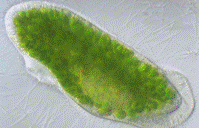Biological Sciences, School of

School of Biological Sciences: Faculty Publications
Document Type
Article
Date of this Version
2014
Citation
Genome Biol. Evol. 6(6):1448–1453. doi:10.1093/gbe/evu115 Advance Access publication June 5, 2014
Abstract
Plant mitochondrial genomes have very low mutation rates. In contrast, they also rearrange and expand frequently. This is easily understood if DNA repair in genes is accomplished by accurate mechanisms, whereas less accurate mechanisms including nonhomologous end joining or break-induced replication are used in nongenes. An important question is how different mechanisms of repair predominate in coding and noncoding DNA, although one possible mechanismis transcription-coupled repair (TCR). This work tests the predictions of TCR and finds no support for it. Examination of the mutation spectra and rates in genes and junk reveals what DNA repair mechanisms are available to plant mitochondria, and what selective forces act on the repair products. A model is proposed that mismatches and other DNA damages are repaired by converting them into double-strand breaks (DSBs). These can then be repaired by any of the DSB repair mechanisms, both accurate and inaccurate. Natural selection will eliminate coding regions repaired by inaccurate mechanisms, accounting for the low mutation rates in genes, whereas mutations, rearrangements, and expansions generated by inaccurate repair in noncoding regions will persist. Support for this model includes the structure of the mitochondrial mutS homolog in plants, which is fused to a double-strand endonuclease. The model proposes that plant mitochondria do not distinguish a damaged or mismatched DNA strand from the undamaged strand, they simply cut both strands and perform homology based DSB repair. This plant-specific strategy for protecting future generations from mitochondrial DNA damage has the side effect of genome expansions and rearrangements.


Comments
Creative Commons Copyright